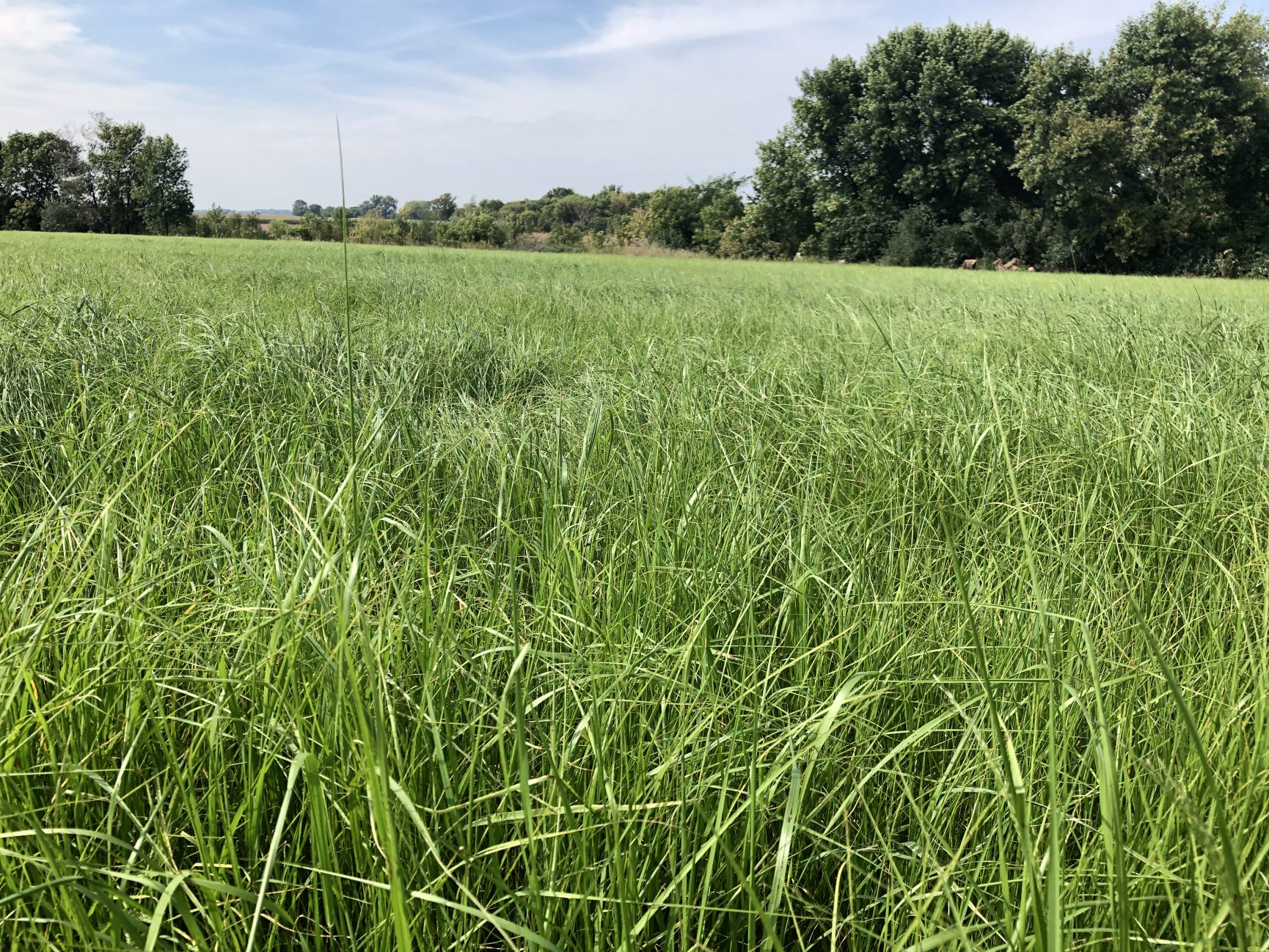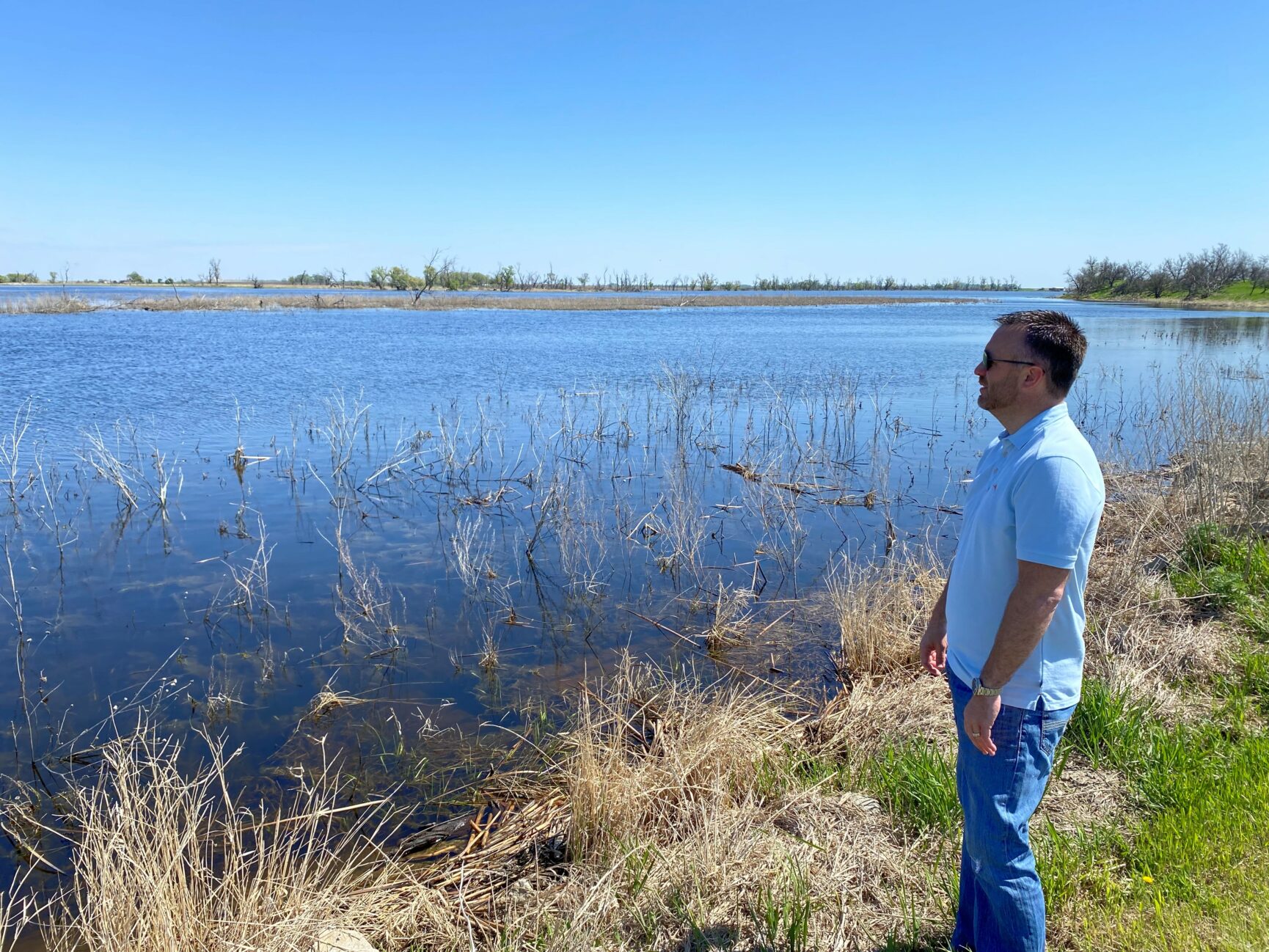By Lura Roti for Millborn Seeds
Recent changes to restrictions on prevent plant acres provide farmers with more options. This is good news for crop and cattle farmer Josh Larson.
It’s May 31 and the part owner in a family farm and feeding operation near Columbia, South Dakota, has yet to finish planting. A late frost and excess moisture prevented the family from planting about 30 percent of their tillable acres.
“What is so weird about this year, coming into spring we were pretty dry with very little snowfall. And then up north of us they received over 5-inches of rain. At the same time, work was being done on the Elm Lake Dam. All of this happened at once and pushed us five feet over flood stage,” explained Larson, who farms many acres adjacent to the James River. “Fingers crossed we will be able to get in to plant those areas at some point.”
Larson predicts about 30 percent of his family’s cropland will qualify for prevent plant. They are not alone. Farmers throughout areas of South Dakota, North Dakota and Minnesota face similar or worse situations, said Joe Reints, a crop insurance agent and owner of Prime Risk Management.
“Most farmers started the year staring drought in the face. It has done an about face. Now, many have fields too wet to plant,” said Reints, who like so many of his customers, will not be able to plant a significant percentage of crop acres on his family’s farm near Willow Lake, S.D.
As final plant dates draw near, Reints is working to inform farmers about the positive changes to restrictions on prevent plant acres.
Improved rules give farmers options
Beginning the 2022 growing season, the Risk Management Agency (RMA) did away with date restrictions on haying, grazing, or chopping a cover crop planted on prevent plant acres after the final plant date – which vary depending on location.
The rule change allows farmers to market or lease grazing rights to a cover crop raised on prevent plant acres. The agency rule changes also mean farmers no longer need to wait 25 days after the final plant date to plant uninsured cover crops on prevent plant acres. And although RMA prevent plant rules allow for seeding of most plant species, they do not allow for corn.
“If the weather cooperates, a farmer can plant a cover crop mix on prevent plant acres the day after the final plant date,” explained Reints, who encourages producers to double check with their crop insurance agent and adjuster to document that the ground is not suitable for planting on the final plant date before they plant a cover crop. “These rule changes are producer-friendly and welcome – especially following a year of severe drought and wildfires that have drastically diminished hay and forage stocks.”
Larson agreed. “In the past, we had to wait until November 1 to harvest forage on prevent plant acres,” explained Larson, who is also an order buyer and helps manage the family feedlot which finish the majority of their cattle for DemKota Ranch Beef. “By that time, the forage had frosted or froze multiple times, and the feed value and tonnage were greatly diminished. Now, if the river goes down, maybe the end of June or first week of July, we will be able to plant and take off a quality forage crop in September.”
Options to maximize soil health & forage on prevent plant acres
When conditions allow, Larson plans to seed the family’s prevent plant acres to German hay millet which he will harvest as forage for his feedlot.
When deciding what to grow on prevent plant acres, understanding the end-use is key, said Justin Fruechte, forage and cover crop specialist at Millborn Seeds.
“No more date restrictions on when producers can hay, graze or chop a cover crop opens up many new options for livestock producers hoping to build up feed reserves for livestock,” said Fruechte, who also raises sheep and cattle on his family’s farm near Ward. “And the fact that we can get in and plant acres as soon as the weather cooperates, allows additional options for producers eager to reap the soil health benefits of cover crops.”
Based on end-use, Fruechte outlines some warm-season hay, silage, grazing and cover crop options that are quick to mature – even when planted mid-summer.





Hay: Millet or Teff grass are warm season annuals that are quick to mature and can be planted as late as mid-July. Both are palatable forages with high value nutritional analysis. The annuals are also quick to dry down. Producers could expect to get up to three cuttings of teff hay before the first frost.
Silage: Early maturing, forage sorghum or sorghum Sudangrass are good options to consider for silage. Both are high yielding and provide a higher protein silage compared to corn.
Grazing: For a grazing mix that will provide a nutritionally complete TMR (total mixed ration) as well as soil health benefits, a diverse blend of warm-season grasses, legumes and brassicas are recommended. In addition to their feed benefits, brassica species like radish and turnips increase water infiltration and alleviate soil compaction.
Cover crops: If forage production is not the end goal, planting acres to a cover crop mixture provides a multitude of soil health benefits that will yield in 2022 and beyond. Depending on the mix, cover crops: prevent erosion, suppress weeds, build nitrogen, increase water infiltration, and alleviate soil compaction.
“Whatever a producer’s end goal, these rule changes ensure that instead of idle acres, once field conditions allow, most prevent plant acres can have living roots growing in them,” Fruechte said. “Making sure something is growing on those acres will have a positive impact on soil health and in many cases, help rebuild the forage supply.”
What farmers need to know about prevent plant rule changes:
- No date restrictions on haying, grazing, or chopping a cover crop
- Farmers can market forage from prevent plant acres
- Farmers can plant cover crops the day after final plant date*




Discussion
0 Comments